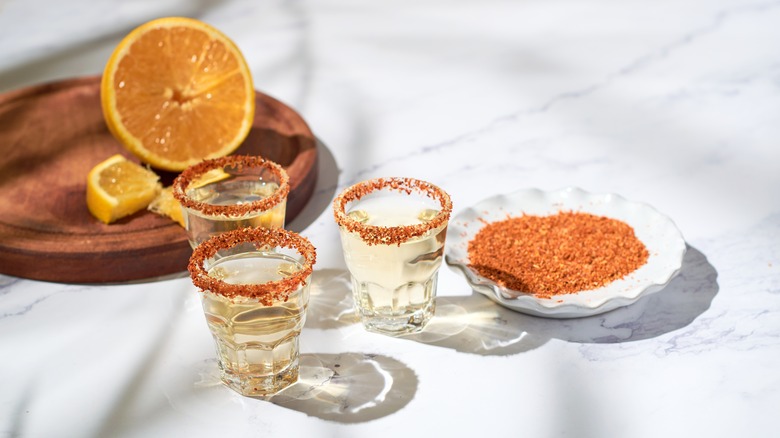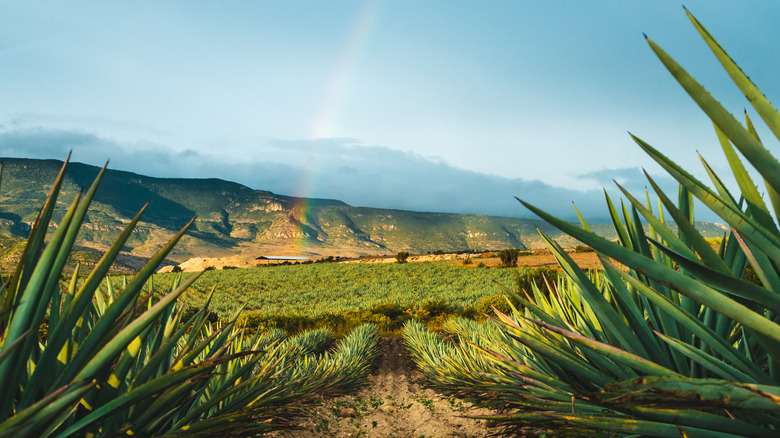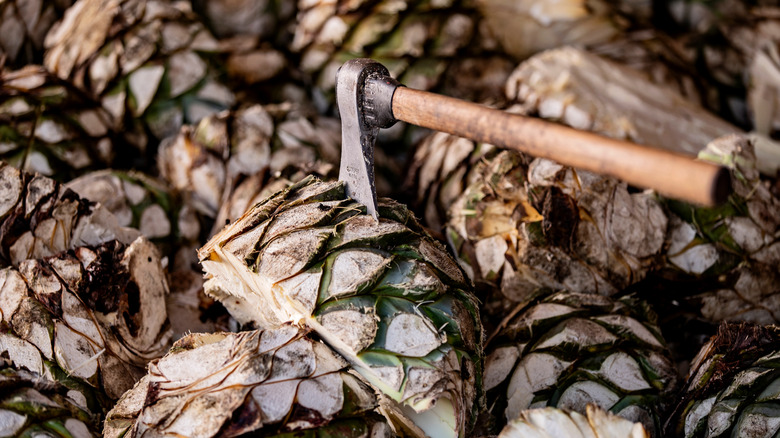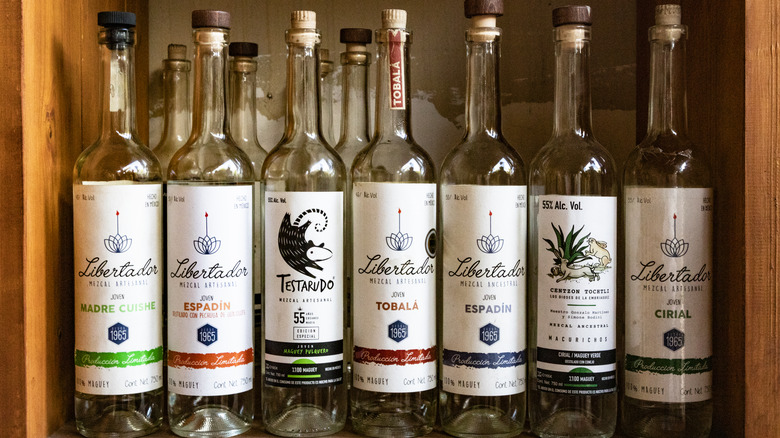Get To Know The 3 Types Of Mezcal
Mezcal has been distilled in Mexico for over 500 years, and many of the traditional methods for making it are still used today. In fact, when the Consejo Regulador del Mezcal (CRM) revamped the category system for mezcal in 2017, traditional agave fermentation and distillation methods were prioritized over modern innovations. There are now three categories of mezcal — mezcal, mezcal artesanal, and mezcal ancestral — with the classification based on the type of equipment used.
Modern autoclaves and column stills may allow for an industrial level of production, but they also ensure the producer will have his label assigned the lowest category level: mezcal. To achieve the higher artesanal or ancestral category levels, producers must adhere to stricter standards regarding traditional equipment, with wood, clay, and stone preferred to stainless steel.
These production categories aren't the only factor in the flavors of the finished product, of course. Different agave types and aging times also matter. As many as 50 different agave species can legally be used to make mezcal in Mexico, although espadín alone accounts for over 80% of production. Mezcal producers also use many of the same terms as their tequila brethren — blanco, reposado, and añejo, for example — to reflect the amount of time, if any, the liquor was aged.
But those new to mezcal who want to understand its intricacies must first understand how the spirit is made. Not only does this determine its category, but also much of its character.
Mezcal
Traditionally, mezcal is made from agave, which depending upon the species, can require up to 25 years or more before reaching maturity. After harvesting, the agave is cooked, milled, fermented, and distilled. It may also be aged in either wooden barrels or glass. Nine states in Mexico are legally allowed to make mezcal, although the state of Oaxaca produces the overwhelming majority (more than 90% as of 2022).
One might assume that the lowest category — mezcal — which, in essence, is mezcal produced on an industrial level, would account for most of the spirit available on liquor store shelves. But that's definitely not the case. In fact, based on the latest 2023 statistics, this category produces less than 5% of all mezcal.
What distinguishes the lowest category of mezcal? Basically, the latest in technological advances are allowed. That means autoclave ovens may be used for roasting the agave hearts (called piñas in Mexico), and industrial grinders and diffusers can be used instead of traditional milling equipment like horse-powered tahonas. Stainless steel tanks are permissible for fermentation, and modern distillation methods are also approved. So instead of the wooden or clay pots required for distillation to achieve mezcal ancestral status, producers in this category can use copper pot stills or stainless steel column stills.
Mezcal Artesanal
If you've ever tried mezcal, it was probably from the mezcal artesanal classification. This type accounts for over 95% of all mezcal made in Mexico, placing it at the forefront of one of the fastest-growing spirits categories. Between 2012 and 2019, mezcal production in Mexico increased by over 700%. Meanwhile, the wholesale cost per bottle nearly doubled over the same time frame. That momentum has only continued to grow in the years since. The international mezcal market, for example, was estimated at $338 million as of 2022.
For those new to the spirit, mezcal artesanal occupies the literal and metaphorical middle ground between modern, industrial-style mezcal (mezcal) and mezcal handmade in age-old fashion (mezcal ancestral). There are no autoclaves or diffusers allowed in mezcal artesanal. But unlike mezcal ancestral, which allows roasting only in earthen pit ovens, producers in this category are permitted to use brick masonry ovens. Distillation, too, is more modernized, as producers may use copper or stainless steel pot stills. Column stills, however, are strictly off-limits.
These artesanal techniques inhibit large-scale production, at least compared to other native Mexican spirits. Don Julio, one of the country's major tequila producers, sold over 12 million liters of its products in 2021. The largest mezcal producers, by contrast, produce about 200,000 liters annually, while many smaller distillers make less than 1,000 liters per year.
Mezcal Ancestral
Stringent standards ensure only the most traditional equipment is used for mezcal ancestral, and as a consequence, very few bottles ever bear this label. According to the latest statistics, less than half of one percent of all mezcals qualify as ancestral.
Mezcal ancestral is made by hand, much as the spirit probably was 500 years ago. No copper is used, let alone stainless steel. Instead, agave piñas are roasted in earthen pits, and in terms of fermentation, stone and wooden vats are the most high-tech equipment used. More traditionally, fermentation is accomplished in the trunks of trees or animal hides. Distillation, the final step, is typically accomplished via clay pots.
One might think, based on this strict adherence to traditional equipment, that this mezcal is the very best in terms of quality. But that's not always the case. As it turns out, modern technology does have its benefits. But tradition is a big part of mezcal's allure, with some distillers producing the spirit only on special occasions. Another unusual practice, and one that hasn't quite caught on in the U.S. as of yet, is the drinking of mezcal de pechuga. This is mezcal which has been distilled with chicken, turkey, or sometimes even rabbit breast (pechuga means breast in Spanish). It's an Oaxacan specialty and one revered for its distinctive flavors. It's also quite pricey and typically costs more than other types of mezcal.




